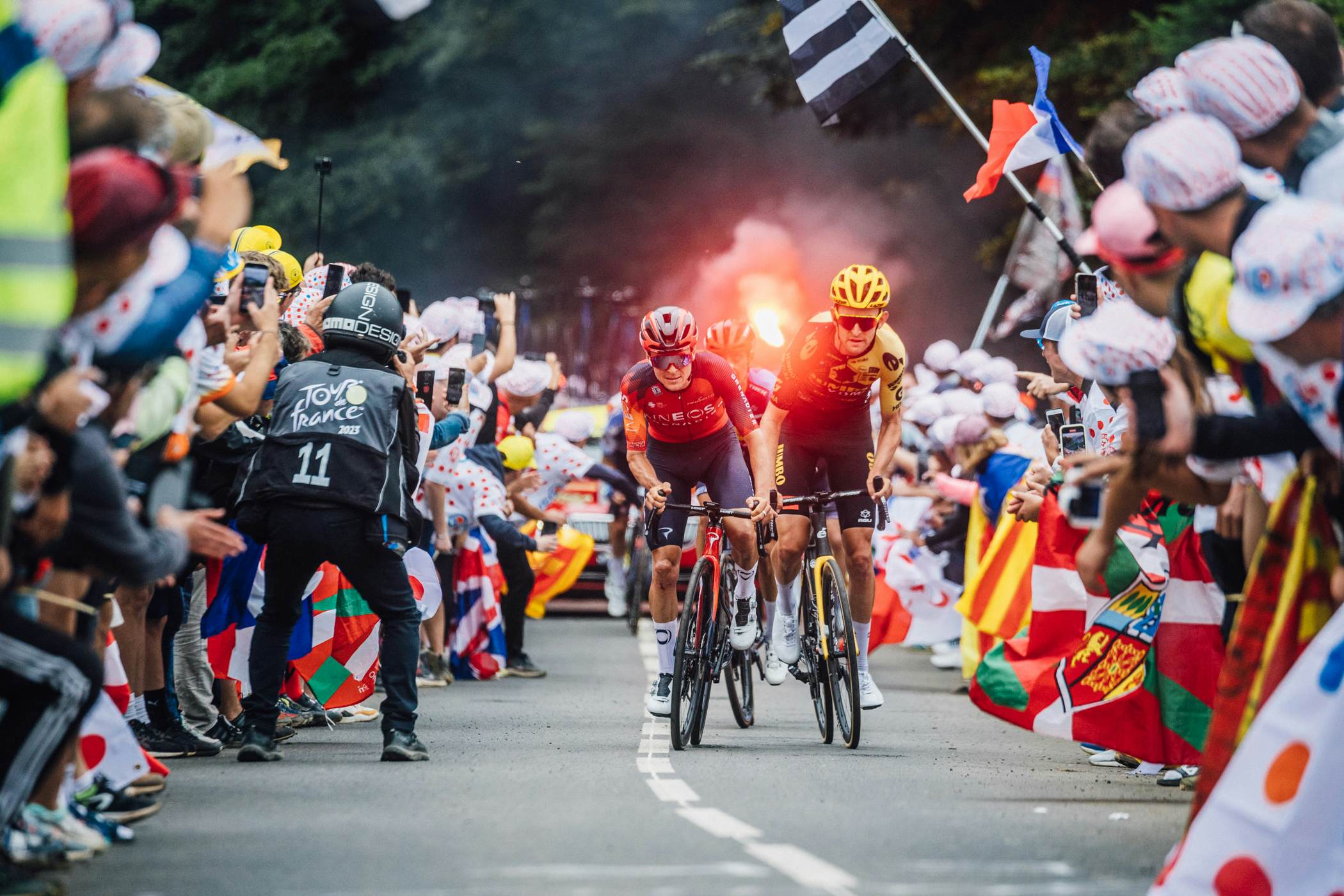Canyon dhb SunGod Sports Director Simon Holt shares his top tips to achieve your best results yet…
Whether the goal is riding further, Strava crown-hunting, or chasing podiums, as cyclists we’re all united by the desire to perform at our best. In celebration of the arrival of summer, we asked Simon Holt, Sports Director at Canyon dhb SunGod, to share his top tips for boosting bike performance. Fresh off the back of the Tour of Slovenia, where his team went head to head with the world's best, including the 2020 Tour de France winner, Simon shares his top pro training tips...
Meet Simon Holt…
Cycling coach and Canyon dhb SunGod Sports Director Simon Holt has built his career around his obsession with cycling. Having raced professionally in both Italy and the UK for teams like Rapha Condor and Colpack, he is now a full-time coach, running his own coaching business, Grinta Coaching. This he does alongside his duties for Canyon dhb SunGod, which include overseeing the training of the team riders and managing the team’s European race programme.
1. Consistency.
In my opinion, there is only one golden rule for training, and that is consistency. Avoiding burnout, whilst maintaining a good balance of conditioning and intensity, is the best way to achieve results and improve. Cycling, unfortunately, offers very few shortcuts, it’s a predominantly aerobic-based sport, and this takes time to build and nurture. The finishing touches, whether for a race or another challenge, can be tackled closer to and designed specifically for the event.
Finishing touches include more than just training and your bike set-up: road cycling sunglasses will help you see better and make the most of race day.
2. Does your bike fit?
The most important thing about the bike is that it fits! Quite simply, when you're going to be riding for 3-4 hours or more, you need it to be comfortable. What's more, you want to utilise all muscle groups, for example, if your saddle is too low, you won’t be using the full length of your leg muscles. If it's too high, you can overstretch them which will decrease the strength of the muscle contraction. Manufacturers invest a lot into designing the most aerodynamic bike, but you shouldn’t forget that it's your body that creates most of the drag, so in having a bike that fits properly, you’ll be able to hold a good position when you need it most.
3. Spinners are winners.
One thing I always see people doing is riding in too big a gear. There is a phrase in cycling, ‘spinners are winners’, having good leg speed is a key component of all successful cyclists and it’s why many pros either race, or begin racing on the track. Maintaining a higher cadence puts less stress on the working muscles, meaning you can go harder for longer!
No matter how hard you're pedalling, you need to see clearly to make every pedal revolution count. SunGod's men's cycling sunglasses and women's cycling sunglasses offer premium optical clarity and wind protection on the road or course.
4. Learn what your mind needs for your body to perform.
When it comes to managing nerves, this is very personal from one rider to another. Some riders perform really well under intense pressure, others will crumble. That’s not to say that either one is better or worse than the other. It’s simply about taking the time to identify how your mind responds to nerves and making sure you’ve prepared some coping techniques to overcome them. This can be anything from keeping your mind occupied and distracted, to visualising the race to stay focussed. Figure out what works for you and allow your nerves to boost your performance on race day, not hinder it!
5. Carb loading is key, but do it right…
Before a big event or ride it’s important to practice carbohydrate loading in training. Sometimes it can be hard to stomach the necessary fuel required for optimum performance, so it's worthwhile getting used to how that feels. Have a mix of different carbohydrate sources, from potatoes, beans, rice and pasta the night before, to bread and oats the morning of the event. Aim to have your final meal 3 hours before the start of the event to allow everything to fully digest. During the race/event itself, aiming for 80-100g carbohydrate consumption per hour is optimum. This might sound like a lot, but many nutrition companies now offer high carb drink products, as well as gels.
6. Have a plan and commit to it.
Research the course before an event and make a plan. If you’re a strong climber for example, you can use the steeper parts to your advantage and equally if you feel it’s a weakness, then you want to be in a good position going into a climb, allowing yourself to drop back a bit through the group on the climb itself. I believe any rider can win any race, it's all about manufacturing the racing situation to suit your strengths by using the terrain wherever it suits you, no matter how insignificant it might seem. The main thing is to have a plan, and have conviction in it. If you’re absolutely committed to that plan, the likelihood is, your competitors will begin to question themselves before you.
We're stoked to see Simon's hard work in action this season as the Canyon dhb SunGod team continue to post strong results across Europe this summer! Now is the time to put the winter training to the test and start to make the small tweaks that will make a huge difference to your performance...
